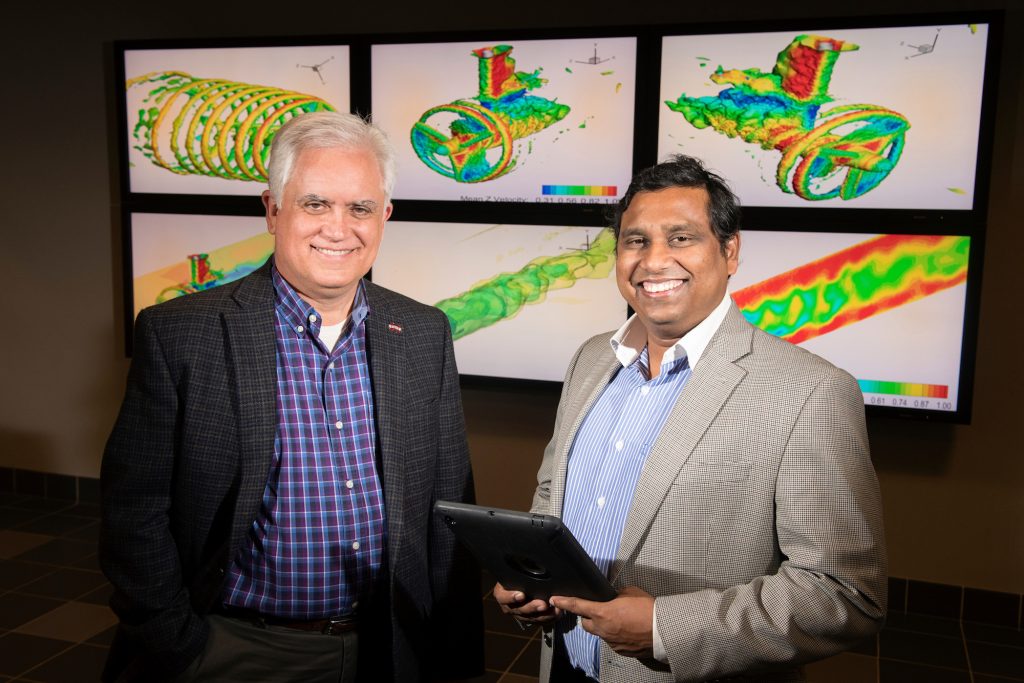Simulation Based Design of Hydrokinetic Farms
March 14, 2017
 An untapped renewable energy source could help transition the country toward clean energy. Mississippi State University and a team of both domestic and international institutions in the United Kingdom are researching a design to transition in-stream hydrokinetic power from concept to mass commercialization.
An untapped renewable energy source could help transition the country toward clean energy. Mississippi State University and a team of both domestic and international institutions in the United Kingdom are researching a design to transition in-stream hydrokinetic power from concept to mass commercialization.
In-stream hydrokinetic power is the electric power generated by extracting energy from the natural flow of water. In this case using the water to power turbines. The sites for gathering this power would be rivers, tidal streams and ocean currents. These are all naturally occurring phenomena that represent a clean, renewable energy source without the necessity of an impoundment, such as a dam.
According to a proposal submitted by Mississippi State University researchers to the National Science Foundation, the maximum combined theoretical resource available from these sources represents almost one-half of the total consumption of electricity in the U.S.
Shanti Bhushan, associate director of CAVS and a computational fluid dynamics researcher, said, “One of the key requirements for an energy source is reliability. In-stream hydrokinetic power can be significantly affected by the daily-to-seasonal changes in the flow rate and current pattern, free-surface roughness, bed topology, sedimentation behavior, etc. Understanding the effects of these factors on the power output using experiments is immensely expensive, if not infeasible. Simulation-based-design tools can play a significant role in this aspect. The proposed collaboration, which brings experts from different disciplines will help in the development of such a tool.”
So why go with in-stream hydrokinetic power versus building another dam? The report made in 2000 by The World Commission on Dams found the following disadvantages of large dams:
- Power – more than half the hydropower dams reviewed generated less power than projected.
- Water supply -70 percent did not reach targets.
- Irrigation – almost half have underperformed.
- Flood control – dams have increased human vulnerability to floods.
- Multipurpose dams mainly fell short of targets.
- Average cost overrun equals 56 percent; if predicted cost was $1 billion, it ends up costing $1.56 billion. (Dams and Development: A New Framework for Decision-Making, 2000)
In-stream hydrokinetic power would not necessitate the development of additional impoundments, thereby foregoing the need for such significant investments monetarily, environmentally and socially. There are, however, obstacles that only the continued research of the international team can solve.
David Thompson, professor and Airbus Helicopters professor for the Department of Aerospace Engineering at Mississippi State University, explains one of the target goals of the research, “What we want to do is accurately predict the impact of the turbine installations on the environment, which can include the wildlife [or] how it affects the navigability of the river.”
The researchers use high-performance computing to predict what the environmental impact of the turbines would be. In doing so, they hope to find ways to mitigate the possibility of turbine-wildlife interactions, the redistribution of sediment in rivers which could affect navigation, and the stirring up of agricultural wastes embedded in the sediments.
With adequate funding and resources to adequately research the use of these turbines, then the country and the world could take a giant leap forward in reducing dependence on fossil fuels and hopefully, create an easier platform for a complete transition to clean energy.
Photo by Beth Wynn / © Mississippi State University
